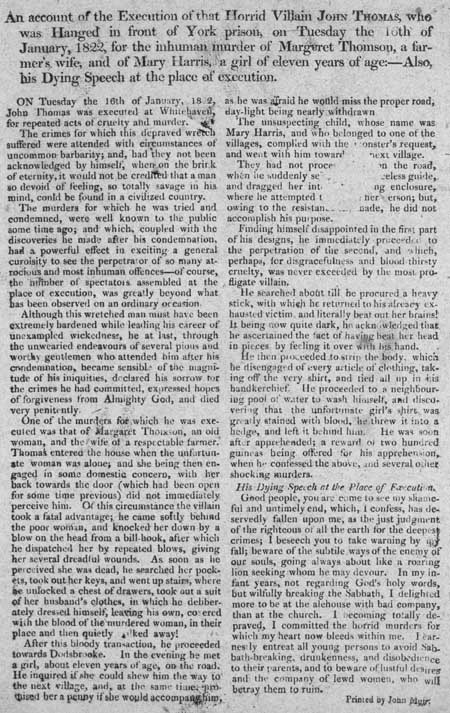Commentary
This account of an execution begins: 'An account of the Execution of that Horrid Villain JOHN THOMAS, who was Hanged in front of York prison, on Tuesday the 16th of January, 1822, for the inhuman murder of Margaret Thomson, a farmer's wife, and of Mary Harris, a girl of eleven years of age:- Also, his Dying Speech at the place of execution.' It was published by John Muir of Glasgow. Today John Thomas would probably be recognised as a serial killer, a term that had not been coined in 1822. His crimes appear to have been motivated principally by a desire to harm and kill, and the report notes that on his arrest, Thomas admitted to 'several other shocking murders'. His dying speech, which attributes his criminality to alcohol, loose women and sabbath-breaking, follows conventions of the period and reveals little about Thomas. It was probably written by one of the ministers who attended Thomas after his conviction. Reports recounting dark and salacious deeds were popular with the public, and, like today's sensationalist tabloids, sold in large numbers. Crimes could generate sequences of sheets covering descriptive accounts, court proceedings, last words, lamentations and executions as they occurred. As competition was fierce, immediacy was paramount, and these occasions provided an opportunity for printers and patterers to maximise sales.
View Transcription | Download PDF Facsimile
|
 |
Date of publication:
1822 shelfmark: L.C.Fol.73(025)
 View larger image
View larger image
|


